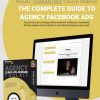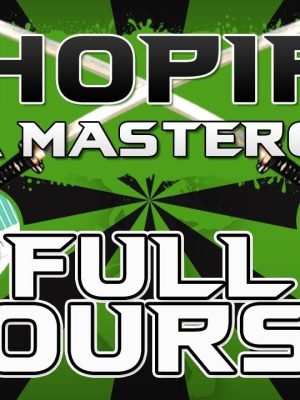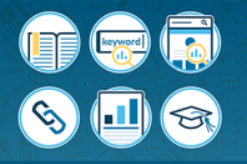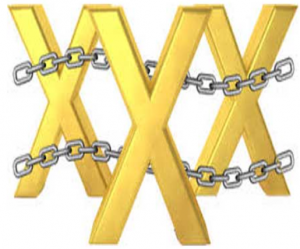DS4B 101-R – Business Analysis With R
$399.00 Original price was: $399.00.$75.05Current price is: $75.05.
DS4B 101-R – Business Analysis With R
Taking the Business Analysis With R course is the equivalent of:
50+ tool-based courses
2 end-to-end projects
2 frameworks
1 foundational data science education
1 clear-cut path to learning data science in 7 weeks that would otherwise take 1 year+ to learn
This course is designed for…
Business Analysts that want to advance your career with Data Science
Microsoft Excel Users that are ready to go beyond Excel to a more powerful, data-specific programming language
Example of what you create in the course
Customer Segmentation Report (created in Week 7: Communication)
Machine Learning Foundations
We’ve streamlined machine learning into 5 hours of video, 44 lessons that you will learn in Week 6 covering all of the major algorithms including:
Linear Regression
Generalized Linear Models (GLM)
Decision Trees
Random Forest
XGBoost
Bonus – Support Vector Machines
Get ed now!
Single Purchase
1X Payment
$399
3 Low Monthly Payments
3X Payments
3 payments of $159/month
6 Low Monthly Payments
6X Monthly
6 payments of $85/month
Learning data science used to be difficult
So you’re a business professional that wants to accelerate your career by learning data science.
This is an excellent decision! Until you try to figure out where to .
The prospect of learning data science seems daunting. There are an endless series of decisions that need to be made.
“Which language is right for me?”
“What libraries should I use?”
“How much time will this take me?”
“What results will I get?”
“WHERE DO I ?!?!”
We’ve been there, which is why we’ve created Business Analysis With R for you.
Taking the guess-work out of learning data science
Business Analysis With R is a revolutionary program that takes the guess-work out of learning data science.
We provide you:
A complete learning path with R: R is the perfect data science language to learn if transitioning from Microsoft Excel. R is functional, which is very similar to Excel.
A cohesive tool chain: You use a common programming API called the tidyverse that simplifies the process of importing, joining, cleaning, wrangling, visualizing, modeling, and communicating data & results.
Comprehensive resources: You are provided cheat sheets, code templates, and resources that speed up learning and make referring back to materials simple.
A 7-week system that packs in a year of knowledge: It normally takes a year or more to learn the tool chain. You learn everything in 7 weeks w/ 5-10 hours per week of coursework.
Full life-time access: Once you purchase the course, you gain life-time access to content now and any updates in the future.
We accelerate your learning through a methodical approach combining tools, resources, & projects.
Tools you will learn
You will learn an amazing tool chain called the tidyverse that makes performing data analysis fast and efficient. You’ll learn how to use each one of the R packages, enabling you to perform the entire data analysis workflow including:
Data import
Joining Data
Data Cleaning
Data Manipulation
Visualization
Modeling
Reporting
Resources you will get
The Business Analysis with R course comes packed with resources, tools, frameworks, and templates. Too many to go over. To talk numbers, you get:
100+ Code Lectures
15+ Hours of recorded content
10+ Cheatsheets & Walkthroughs
20+ Downloadable code templates
2 Projects
and more!
Projects you will complete
The Business Analysis With R Course incorporates two projects as a guide for our learning:
R&D Project – Goal: Utilize data to assist the Research & Development department in coming up with a new product idea and a targeted price point
Marketing Project – Goal: Use data mining techniques to segment the customer base empowering the Marketing department to implement targeted emails to customers in turn increasing engagement
In week 7, you will create two reproducible business reports containing the results of the analysis.
Challenges you will conquer
The Business Analysis with R Course includes a number of challenges where you will apply what you’ve learned. Shown is the Week 6 Challenge that extends the Customer Segmentation to a real-world challenges where you will segment Companies by their stock price movements.
Summary of what you get
A methodical training plan that encapsulates 1+ years of knowledge into an accelerated 7 week training – compared to on premise workshop ($5000 value)
Hundreds of resources ($1000 value):
10+ Cheatsheets with Walkthroughs
20+ Downloadable Code Templates
2 Business Projects
4+ Challenges
Adding it up: $6000 value
Purchase today for: $399
Get ed now!
Single Purchase
1X Payment
$399
3 Low Monthly Payments
3X Payments
3 payments of $159/month
6 Low Monthly Payments
6X Monthly
6 payments of $85/month
Your Instructor
Matt Dancho
Matt Dancho
Get immediately download DS4B 101-R – Business Analysis With R
Founder of Business Science and general business & finance guru, He has worked with many clients from Fortune 500 to high-octane ups! Matt loves educating data scientists on how to apply powerful tools within their organization to yield ROI. Matt doesn’t rest until he gets results (literally, he doesn’t sleep so don’t be suprised if he responds to your email at 4AM)!
Course Curriculum
Welcome to Business Analysis With R (DS4B 101-R)!
Your Journey To Learning R For Business s Now! (2:33)
Course Certificate – Instructions
Private Slack Channel: How To Join
Prerequisites
Prerequisites
Getting Help
Getting Help (IMPORTANT!!!)
Week 1: Jump
Week 1 Overview (1:33)
1.1 Goal: Better Serving Customers With Data
The Business Case (0:54)
1.2 What Tools Are In Our Toolbox?
The ULTIMATE R Cheatsheet (File Download) (2:14)
How To Use The ULTIMATE R Cheatsheet (2:39)
1.3 Data Science Project Setup
Installing R & RStudio IDE, Part 1: Installing R (3:06)
Installing R & RStudio IDE, Part 2: The RStudio IDE (3:03)
RStudio IDE: Setup & Customization (5:40)
Setting Up The Project (File Download) (2:38)
Project Directory Structure & Contents (5:25)
Installing R Packages (File Download) (11:47)
Package Installation Checkpoint
1.4 Optional: Transactional Database Primer
Who Should Watch This?
Transactional Data: What Is It? What Will We Do With It In This Course? (1:41)
Orders: The Building Blocks Of Transactional Data (File Download) (3:53)
Database 101: The Entity Relationship Diagram (ERD) (2:14)
Understanding Database Relationships (6:18)
1.5 Sales Analysis – Diving In!
Read This! – Jump Intent
Overview (1:27)
Setup (File Download) (4:40)
1.5.1 Sales Analysis, Part 1 – Importing, Examining, & Joining Data
Importing Excel Files (6:18)
Examining Data: Console, Data Window, glimpse() (4:27)
Data Model (1:12)
Joining Data, Part 1: Combining 2 Tibbles With left_join() (6:04)
Joining Data, Part 2: Combining Multiple Tibbles With The Pipe (5:07)
Code Checkpoint: Joining Data (File Download)
1.5.2 Sales Analysis, Part 2 – Wrangling Data With dplyr
Wrangling Data Overview (3:00)
Splitting Description Into Category 1, Category 2, & Frame Material: separate() (4:35)
Splitting Location Into City & State: separate() (1:55)
Adding Total Price Column: mutate() (2:41)
Removing Unnecessary Columns: select() (3:59)
Getting The Order ID Column Back: bind_cols() (2:34)
Reordering Columns: select() (4:53)
Renaming Columns: rename() & set_names() (5:28)
Storing The Wrangled Data (1:10)
Code Checkpoint: Wrangling Data (File Download)
1.5.3 Sales Analysis, Part 3 – Visualizing Data With ggplot2
Sales Analysis Visualizations Overview (1:19)
Sales By Year: Data Manipulation (7:23)
Sales By Year: ggplot geometries (10:28)
Sales By Year: ggplot2 formatting (5:45)
Sales By Year & Category 2: Data Manipulation (7:11)
Sales By Year & Category 2: ggplot geometries + facet_wrap (6:45)
Sales By Year & Category 2: ggplot2 Formatting (5:38)
Code Checkpoint: Visualizing Data (File Download)
1.5.4 Visualization Process & Saving Key Data
Data Visualization Process (File Download) (1:38)
Writing Files: Excel, CSV, RDS (7:32)
Code Checkpoint: Writing Files (File Download)
Week 2: Import & Data Wrangling Foundations (Level 1)
Week 2 Overview (1:41)
Important Concepts Before Diving In
Data Type & Structure Basics (File Download) (7:01)
Tidy Data Primer (File Download) (8:20)
2.1 Importing Data: readr, readxl, odbc, & RSQLite
Importing Data Overview (0:41)
Data Import Cheatsheet (2:44)
Setup (File Download) (2:04)
CSV Files (7:35)
CSV Files: Fixing Parsing Errors With Column Specifications (3:41)
RDS Files (3:11)
Excel Files (3:50)
Database Connection Resources (2:39)
Connecting To Databases: SQLite (8:13)
Code Checkpoint: Importing Data (File Download)
2.2 Wrangling Data (Cleaning, Preparing, & Manipulating Data): dplyr & tidyr
Data Wrangling Overview (1:41)
Setup (File Download) (1:19)
Data Wrangling Outline (2:19)
Examining The Data (1:35)
2.2.1 Using The ULTIMATE R Cheatsheet For Data Wrangling
Using The R Cheatsheet For Data Wrangling (5:10)
2.2.2 Working With Columns (Features)
Selecting Columns: select() & select helpers (8:02)
Pull Vectorized Contents: pull() (2:56)
Select Data By Data Type: select_if() (3:31)
Sorting Columns: arrange() (2:59)
Code Checkpoint: select (File Download)
2.2.3 Working With Rows (Observations)
Filtering Rows: filter() (5:58)
Filtering Categorical Data: %in%, ==, and != (6:32)
Filtering By Row Number: slice() (3:45)
Filtering Unique Observations: distinct() (3:39)
Code Checkpoint: filter (File Download)
2.2.4 Performing Feature-Based Calculations
Adding Calculated Columns: mutate() (8:36)
Binning Numeric Data: mutate() + ntile() (2:29)
If-Then Statements Inside Mutate: mutate() + case_when() (9:40)
Code Checkpoint: mutate (File Download)
2.2.5 Performing Summary Calculations, Analyzing Groups, & Renaming Columns for Presentation
Aggregating Data: group_by() + summarize() (5:18)
Summary Functions (5:48)
Detecting & Handling Missing Values: summarize_all() & filter() (8:20)
Renaming Columns for Presentation: Part1, rename() (4:59)
Renaming Columns For Presentation, Part 2: set_names() (2:40)
Code Checkpoint: summarize (File Download)
2.2.6 Reshaping Data (Pivoting)
From Long To Wide Format: spread() (4:59)
From Wide To Long: gather() (6:56)
Code Checkpoint: Pivoting (File Download)
2.2.7 Combining Data (Joining & Binding)
Joining Data: left_join() (4:59)
Binding Data: bind_cols() & bind_rows() (6:05)
Code Checkpoint: Combining Data (FIle Download)
2.2.8 Splitting & Combining Column Text
Manipulating Text In Columns: separate() & unite() (7:26)
Code Checkpoint: Splitting & Combining Text
2.3 Week 2 Challenge
Week 2 Challenge (File Download) (8:00)
Week 2 Challenge – Solution (File Download) (10:42)
Challenges: Organizing The Directory (2:49)
Week 3: Data Wrangling Foundations (Level 2)
Data Wrangling Level 2 Overview (2:02)
3.1 Time Series Fundamentals: lubridate
Cheat Sheet: lubridate (3:37)
Setup (File Download) (2:28)
Date Basics (4:39)
Character & Date Classes (5:05)
Converters: lubridate basics part 1 (3:37)
Extractors: lubridate basics, part 2 (4:30)
Helpers: lubridate basics, part 3 (1:07)
Periods & Durations: lubridate basics, part 4 (3:04)
Intervals: lubridate basics, part 5 (5:35)
3.2 Time Series Analysis: Most Common Business Operations
Time Series Aggregation: group_by() + summarize() (9:29)
Time Series Aggregation: floor_date() (4:27)
Measuring Change: lag(), part 1 – Annual Change (7:05)
Measuring Change: lag(), part 2 – Monthly Change (2:48)
Measuring Change: first(), part 1 – From First Year (3:22)
Measuring Change: first(), part 2 – From First Month (5:24)
Cumulative Calculations: cumsum() (3:21)
Cumulative Calculations: Cumulative Percentage (5:31)
Rolling Calculations: zoo::rollmean() (7:54)
Filtering Date Ranges (4:24)
Code Checkpoint: lubridate (File Download)
3.3 Text Fundamentals: stringr
Cheat Sheet: stringr (3:38)
Text Analysis Setup (File Download) (3:08)
Text Detection: str_detect() (5:10)
Changing Case: str_to_upper(), str_to_lower(), & str_to_title() (1:47)
Concatenation, Part 1: str_c() (2:40)
Concatenation, Part 2: str_glue() (6:11)
Separating Text: tidyr::separate() & str_split() (6:42)
Trimming Text: str_trim() (1:38)
Replacing Text: str_replace() & str_replace_all() (6:23)
Formatting Numbers: scales library (6:22)
Formatting Column Names Programmitcally, Part 1: set_names() (4:46)
Formatting Column Names Programmatically, Part 2: rename_at() (7:12)
3.4 Text Analysis: Feature Engineering Case Study
Get immediately download DS4B 101-R – Business Analysis With R
Feature Engineering Part 1: Overview (2:30)
Feature Engineering Part 2: Data Cleaning (Fixing Typo No. 1) (4:34)
Feature Engineering Part 3: Separating Model Text (6:55)
Feature Engineering Part 4: Making A Model Base, Pt1 (6:44)
Feature Engineering Part 5: Making A Model Base Pt2 (4:15)
Feature Engineering Part 6: Fixing Typo No. 2 (1:25)
Feature Engineering Part 7: Making A Model Tier Column (2:40)
Feature Engineering Part 8: Remove Unnecessary Columns (1:31)
Feature Engineering Part 9: Fix Missed Model Concatenation (1:45)
Feature Engineering Part 10: Mining Model Tier For Flags, Pt1 (5:52)
Feature Engineering Part 11: Fixing Typo No. 3 (1:21)
Feature Engineering Part 12: Mining Model Tier For Flags, Pt2 (1:31)
Code Checkpoint: stringr (File Download)
Categorical Data Fundamentals: forcats
Documentation: forcats (1:44)
Categorical Data Setup (File Download) (2:29)
Why Factors? (3:07)
Motivating Example, Part 1: Visualizing Sales By Secondary Product Category (8:20)
Motivating Example, Part 2: Finishing Up The Sales By Secondary Product Category Visualization (4:43)
Factors & forcats Basics (6:01)
as_factor() vs as.factor() (2:43)
Reordering Factors: fct_reorder() & fct_rev() (4:53)
Time-Based Factor Reordering: fct_reorder2() (8:54)
Making An “Other” Category: fct_lump() & fct_relevel() (6:18)
Code Checkpoint: forcats (File Download)
Week 3 Challenges
Week 3 Challenge (File Download) (7:18)
Week 3 Challenge – Solution (File Download) (23:01)
Week 4: Data Visualization with ggplot2
Data Visualization – Overview (2:59)
ggplot2 Cheat Sheet: Page 1, Geometries (5:34)
ggplot2 Cheat Sheet: Page 2, Formatting (3:49)
4.1 Anatomy Of A ggplot
Anatomy (File Download)
Generating A ggplot2, Part 1: Data & Geoms (9:37)
Generating A ggplot2, Part 2: Formatting (5:41)
Anatomy of a ggplot2 Object: What is g? (3:30)
4.2 ggplot2 Geometries
Geometries Setup (File Download) (2:33)
Scatter Plot, Part 1: Data Manipulation (4:49)
Scatter Plot, Part 2: geom_point() & geom_smooth() (10:37)
Line Plot, Part 1: Data Manipulation (4:27)
Line Plot, Part 2: geom_line() & geom_smooth() (6:35)
Bar/Column Plot, Part 1: Data Manipulation (3:11)
Bar/Column Plot, Part 2: geom_col() (5:41)
Histogram Plot: geom_histogram() (6:18)
Histogram – Faceted (6:10)
Density Plot: geom_density() (3:04)
Box Plot: geom_boxplot() (7:11)
Violin Plot: geom_violin() & geom_jitter() (5:19)
Text & Labels, Part 1: Data Manipulation (3:36)
Text & Labels: geom_text() (7:39)
Text & Labels: geom_label() (6:51)
Code Checkpoint (File Download)
4.3 ggplot2 Formatting
Cheat Sheet – ggplot – Page 2 (1:01)
Formatting Setup (File Download) (5:16)
Colors & Color Conversions (5:55)
Color Palettes: tidyquant, Brewer, & Viridis (9:14)
Aesthetic Mappings: color (5:56)
Aesthetic Mappings: fill (3:33)
Aesthetic Mappings: size (3:40)
Faceting (7:06)
Position Adjustments: Bar Plot, Stacked & Dodge (3:57)
Stacked Area: geom_area() (1:21)
Scales: Setup (8:22)
Scales: Scale Color Continuous (7:22)
Scales: Scale Color Discrete (5:57)
Scales: Scale Fill Discrete (2:21)
Scales: Scale X&Y (4:40)
Labels & Legends: labs() (5:04)
Theme: theme() (9:25)
Putting It All Together (11:05)
Code Checkpoint (File Download)
4.4 Advanced Business Plotting with ggplot2
Advanced Business Plotting: Setup (File Download) (1:19)
Top N Customers: Lollipop Plot, Part 1 – Data Manipulation (14:44)
Top N Customers: Lollipop Plot, Part 2 – Geometries (11:07)
Top N Customers: Lollipop Plot, Part 3 – Formatting (10:50)
Customer Buying Habits: Heatmap, Part 1 – Data Manipulation (8:37)
Customer Buying Habits: Heatmap, Part 2 – Geometries & Scales (8:37)
Customer Buying Habits: Heatmap, Part 3 – Labels & Theme (9:59)
Code Checkpoint (File Download)
Week 5: Functional Programming & Iteration with purrr
Functional Programming & Iteration – Overview (0:59)
5.1 Functional Programming
Cheat Sheet: Base R (3:10)
Setup: Functional Programming (File Download) (3:44)
Anatomy of a Function, Part 1: Why Customize the mean() Function? (3:53)
Anatomy of a Function, Part 2: Customizing the mean() Function (5:41)
Example Data Manipulation: Sales By Year & Category 2 (9:45)
Example Data Visualization: Sales By Year & Category 2 (5:42)
The 2 Types of Functions: Vectorized vs Data Frame (5:27)
Controlling Flow: If Statements, Messages, Warnings, & Errors (9:41)
detect_outliers(), Part 1: Building A Vectorized Function (3:08)
detect_outliers(), part 2: Function Setup (3:54)
How A Box Plot Detects Outliers (1:03)
detect_outliers(), Part 3: Implement Box Plot Outlier Logic (6:07)
detect_outliers(), Part 4: Adding a Flag with case_when() (3:07)
detect_outliers(), Part 5: Testing Our Function (1:23)
detect_outliers(), Part 6: Visualizing Outliers (5:24)
separate_bike_model(), Part 1: A Data Frame Function (8:34)
separate_bike_model(), Part 2: Testing Our Function (2:38)
Saving Functions, Part 1: Creating Files & Folders (2:16)
Saving Functions, Part 2: Creating a header with write_lines() (4:12)
Saving Functions, Part 3: Writing Functions with dump() (1:31)
Saving Functions, Part 4: Loading Functions with source() (1:32)
Checkpoint: Functional Programming (File Download)
5.2 Iteration with purrr
Cheat Sheet: purrr (5:16)
Setup: Iteration with purrr (File Download) (3:39)
purrr primerrr, Part 1: Reading Many Excel Files in a Directory (3:08)
purrr primerrr, Part 2: For Loop (3:26)
purrr primerrr, Part 3: map() (6:23)
purrr primerrr, Part 4: Reading Multiple Excel Sheets in an Excel File (2:20)
Mapping Over Data Frames (10:01)
Nested Data, Part 1: unnest() (5:42)
Nested Data, Part 2: nest() (1:33)
Mapping Nested Data, Part 1: Create Function that Works on 1 Element (4:21)
Mapping Nested Data, Part 2: Scale with mutate() + map() (6:21)
Modeling with purrr, Part 1: LOESS Smoother for Time Series (4:58)
Modeling with purrr, Part 2: Make a LOESS model with loess() (7:31)
Modeling with purrr, Part 3: Intro to broom, augment() (3:42)
Modeling with purrr, Part 4: Creating a tidy_loess() function for mapping (8:53)
Modeling with purrr, Part 5: Mapping tidy_loess() to all Categories (8:10)
Checkpoint: Iteration with purrr (File Download)
Week 6: Modeling, Part 1 – K-Means Clustering & UMAP
Modeling, Part 1: Overview – K-Means & UMAP (0:46)
Clustering & Dimensionality Reduction – Key Concepts & Theory Explained
Cheat Sheet Download: Segmentation and Clustering (File Download) (0:48)
Segmentation & Clustering Workflow (9:22)
6.1 Customer Segmentation with K-Means Clustering & UMAP
Customer Segmentation with K-Means Clustering Setup (File Download) (2:53)
Analyzing Customer Trends & The User-Item Matrix (2:17)
Setting Up Customer Trends, Part 1: Aggregation (7:44)
Setting Up Customer Trends, Part 2: Normalization (3:42)
User-Item Matrix (3:50)
K-Means Clustering for Customer Segmentation: Algorithm Overview (4:23)
kmeans() Function (6:56)
broom: Tidy the kmeans() Output (5:44)
purrr: Cluster Iteration with map() (8:37)
Scree Plot: Visualize & Evaluate K-Means Clusters (7:36)
K-Means Recap (1:30)
UMAP: High-Performance Dimension Reduction (1:09)
umap() Function (8:36)
Combining UMAP & K-Means Results (4:48)
Customer Segment Visualization (6:36)
Customer Segment Purchasing Trends Analysis, Step 1: Joining Clusters (3:15)
Customer Segment Purchasing Trends Analysis, Step 2: Binning Price (5:47)
Customer Segment Purchasing Trends Analysis, Step 3: Rearranging Columns (2:58)
Customer Segment Purchasing Trends Analysis, Step 4: Aggregation (2:29)
Customer Segment Purchasing Trends Analysis, Step 5: Normalization (1:46)
Customer Segment Purchasing Trends Analysis, Step 6: Cluster 1 (4:01)
Customer Segment Purchasing Trends Analysis, Step 7: Clusters 2-4 (4:39)
Customer Segment Purchasing Trends Analysis, Step 8: Visualization (8:03)
Code Checkpoint (File Download)
Week 6: Challenge 1 – Company Segmentation with Stock Prices
Challenge Setup: Overview & Data (File Download) (6:46)
Challenge Questions (8:37)
Challenge Bonus – Exploring Clusters with an Interactive Plot (0:51)
Challenge Solution (File Download) (25:21)
Week 6: Modeling, Part 2 – Machine Learning (Regression)
Learning Plan – Zero to Machine Learning Pro in Hours (Not Years)
Cheat Sheet: Machine Learning for Regression (File Download) (2:24)
6.2.1 Machine Learning Concepts
Get immediately download DS4B 101-R – Business Analysis With R
Introduction to Machine Learning – Key Concepts Explained
Machine Learning Summary & Terminology (9:16)
Machine Learning: Model List & Model Overview (11:18)
6.2.2 Business Problem & Data Preparation
Regression Modeling Setup (FIle Download) (9:31)
Documentation: parsnip, rsample, recipes, & yardstick (8:19)
Business Problem Review: Product Gaps (7:23)
Train / Test Part 1: Data Preparation & Feature Engineering (4:37)
Train / Test Part 2: Splitting the Data with rsample::initial_split() (8:06)
6.2.3 Linear Algorithms
Linear Regression – Theory Explained
Parsnip Model List (Amazing Resource) (1:56)
Linear Regression, Part 1 (Model 01): The parsnip::linear_reg() function (8:14)
Linear Regression, Part 2 (Model 01): The predict() function (2:29)
Linear Regression, Part 3 (Model 01): Calculating Model Metrics (6:49)
Model Interpretability for Linear Models – How it works
Linear Regression, Part 4 (Model 01): Model Explanation (11:37)
Calculating Metrics: Model Helper (3:44)
Linear Regression Complex (Model 02): Adding Engineered Features (6:44)
Linear Regression Complex (Model 02): Model Explanation (4:51)
GLM Regularized Regression: Theory Explained
GLM Regularized Regression (Model 03): GLMNET (Elastic Net) (9:01)
GLM Regularized Regression (Model 03): Model Explanation (3:53)
6.2.4 Tree-Based Algorithms
Tree-Based Methods & Parsnip Documentation (2:37)
Decision Trees: Theory Explained
Decision Trees (Model 04): rpart (8:39)
Decision Trees (Model 04): Model Explanation with rpart.plot() (8:57)
Random Forest: Theory Explained
Random Forest (Model 05): ranger (12:01)
Random Forest (Model 05): Ranger Model Explanation (7:20)
Random Forest (Model 06): randomForest (3:26)
Random Forest (Model 06): randomForest Model Explanation (5:22)
Reproducibility: set.seed() (2:09)
Gradient Boosted Machines (GBM): Theory Explained
Gradient Boosted Machines (Model 07): XGBoost (7:53)
Mini Challenge: Tune Your XGBoost Model (0:31)
Mini Challenge Solution: Tune Your XGBoost Model (1:23)
Gradient Boosted Machines (Model 07): XGBoost Model Explanation (5:05)
Code Checkpoint (File Download)
6.2.5 Testing the Models & Visualization
Prediction & Evaluation Overview (1:47)
Predicting New Bike Model: Over Mountain – Aluminum – Jekyll (10:46)
Plotting Predictions: Over Mountain – Aluminum – Jekyll (5:39)
Week 6 – Challenge 2: Predicting New Bike Model
Challenge: New Triathlon – Aluminum – Slice (0:36)
Challenge Solution: New Triathlon – Aluminum – Slice (10:05)
Code Checkpoint – With Challenge Solution (File Download)
6.2.6 Modeling Recap
Modeling Recap & Next Steps (7:09)
6.2.7 BONUS – Preprocessing & Support Vector Machines
Preprocessing Pipelines with recipes (10:03)
Applying Transformations & Getting Step Information with tidy() (4:14)
Support Vector Machine (SVM): Theory Explained
Support Vector Machine (Model 08): kernlab (7:46)
Support Vector Machine (Model 08): Tuning the Model (3:32)
SVM (Model 08): Testing on New Bike Models (6:32)
6.2.8 BONUS – Saving & Loading Models
Saving & Loading Models – With tibbles! (10:14)
Code Checkpoint (File Download)
Week 7: Communication
Week 7 Kickoff! (1:08)
7.1 RMarkdown Primer
RMarkdown Cheat Sheet (5:58)
Setup – RMarkdown (File Download) (8:30)
YAML: Controlling Your Document Properties (10:11)
Knitr Global Options, Part 1: echo, eval, results, fig.keep (7:42)
Knitr Global Options, Part 2: message, warning, dpi, and more (4:00)
RMarkdown: Used for Reports, Websites, Books, Apps, & More! (3:23)
RMarkdown: Key Resources To Get ed (1:33)
RMarkdown: Headers, Text, & Lists (4:05)
RMarkdown: Tabsets & Images (6:50)
RMarkdown: Code Chunks (3:32)
RMarkdown: Plotting (3:25)
RMarkdown: Tables & Footnotes (5:38)
7.2 Building Interactive Plots with Plotly
Setup – Plotly (File Download) (3:15)
7.2.1 Part 1: Total Sales vs Time – Interactive Plotting Function
plot_total_sales(): A Custom Interactive Plotting Function (1:52)
Preparing Data for Plotting (5:30)
String-Format-Time Expressions: strftime Cheat Sheet (2:18)
Formatting Time Stamps with strftime Expressions (5:11)
Making the Interactive Plot with plotly & ggplot2 (8:35)
plot_total_sales(), Part 1: Setting up the custom time series function (6:39)
plot_total_sales(), Part 2: Integrating ggplot() & ggplotly() (5:00)
7.2.2 Building Interactive Plots with plotly – Part 2: Sales By Category vs Time
plot_categories(): A Custom Interactive Faceted Plotting Function (1:38)
Preparing Data For Plotting (5:43)
Making the Interactive Plot with plotly & ggplot2 (8:51)
plot_categories(), Part 1: Handling the Data (5:33)
plot_categories(), Part 2: Handling the Inputs & Filter Logic (7:21)
plot_categories(), Part 3: Generating the Interactive Plot (5:23)
Saving Our Functions (1:59)
Code Checkpoint (File Download)
7.3 Sales Report with RMarkdown
Building an Interactive Sales Report – HTML & PDF – RMarkdown & Plotly (1:40)
RMarkdown Setup (2:35)
YAML Setup (5:43)
Knitr Global Options (3:01)
Plotting Function Setup – RMarkdown (5:46)
Report: Total Sales Section (8:39)
Report: Road Bikes Section (6:00)
Report: Mountain Bike Section (1:17)
Converting to PDF Format (2:16)
Code Checkpoint (File Download)
Project 1 Report – Product Pricing Prediction Algorithm with XGBoost
New Product Pricing Report – What You’re Building! (1:19)
Setup (File Download) (4:45)
Data Science Report Structure – How to Communicate Data Science Effectively (2:10)
Gap Analysis, Part 1: Bike List & get_bike_features() (7:12)
Saving Functions with dump() & Loading Functions with source() (2:17)
Gap Analysis, Part 2: Analyzing the Product Gaps & plot_bike_features(), Part 1 (8:52)
plot_bike_features(), Part 2: Formatting the Plot (6:47)
Saving Our Functions & Re-Knitting Our Report (3:59)
Price Prediction Algorithm, Part 1 (4:56)
Price Prediction Algorithm, Part 2 (6:06)
Formatted Tables: knitr::kable() (2:10)
Solution Summary (3:03)
Code Checkpoint (File Download)
Project 2 Report – Customer Segmentation with K-Means & UMAP
Customer Segmentation Report – Yep, you’re going to build this! (2:18)
Setup (File Download) (3:34)
Report Overview – Customer Segementation (2:16)
Heat Map, Part 1 – Data Manipulation (7:35)
Heat Map, Part 2 – Static Visualization with ggplot2 (8:32)
Heat Map, Part 3 – Interactive Plot with ggplotly() (6:10)
Saving Functions & Adding Your Analysis To The Report (4:48)
Customer Segmentation, Part 1 – Customer Trends (7:18)
Customer Segmentation, Part 2 – K-Means Clustering (4:51)
Customer Segmentation, Part 3 – UMAP (6:02)
Customer Segmentation, Part 4 – Combining K-Means & UMAP (2:54)
Customer Segmentation, Part 5 – Plotting Function (9:10)
Saving Functions & Adding Your Analysis to the Report (2:45)
Customer Preferences, Part 1 – Overview (1:25)
Customer Preferences, Part 2 – Data Manipulation 1 (6:33)
Customer Preferences, Part 3 – Data Manipulation 2 (5:50)
Customer Preferences, Part 4 – Visualization 1 (9:47)
Customer Preferences, Part 5 – Visualization 2 (5:22)
Saving & Loading the Functions – dump() & source() (1:53)
Completing the Analysis – Customer Preferences Statement & Solution Summary (6:02)
Code Checkpoint (File Download)
Course Completion – Hooray!
Congrats! You Did It! (1:12)
About Data Science For Business with R (DS4B 201-R): Learn H2O, LIME, & the BSPF (2:30)
Get Your Certificate & Show It To The World! (1:07)
Frequently Asked Questions
Get immediately download DS4B 101-R – Business Analysis With R
When does the course and finish?
The course s now and never ends! It is a completely self-paced online course – you decide when you and when you finish.
How long do I have access to the course?
How does lifetime access sound? After enrolling, you have unlimited access to this course for as long as you like – across any and all devices you own.
What if I am unhappy with the course?
We would never want you to be unhappy! If you are unsatisfied with your purchase, contact us in the first 30 days and we will give you a full refund.
Read more: https://archive.is/8Zt5z
Q & A
Related products
SEO & Design Website
SEO & Design Website
SEO & Design Website
SEO & Design Website
SEO & Design Website
SEO & Design Website
SEO & Design Website
SEO & Design Website













Reviews
There are no reviews yet